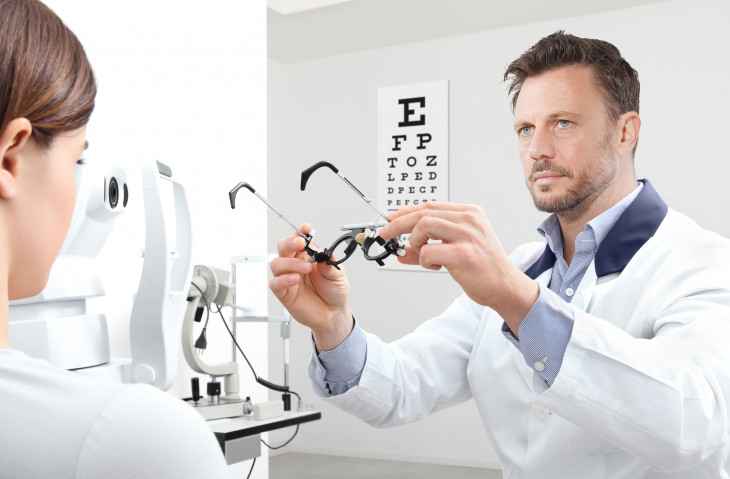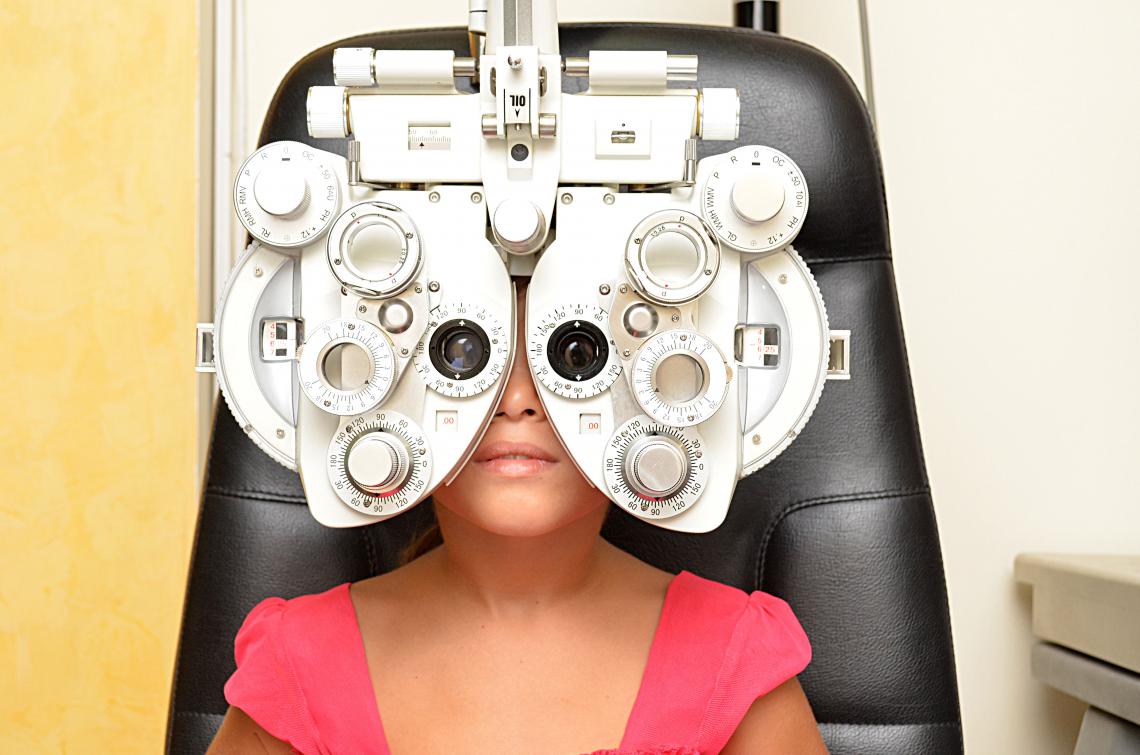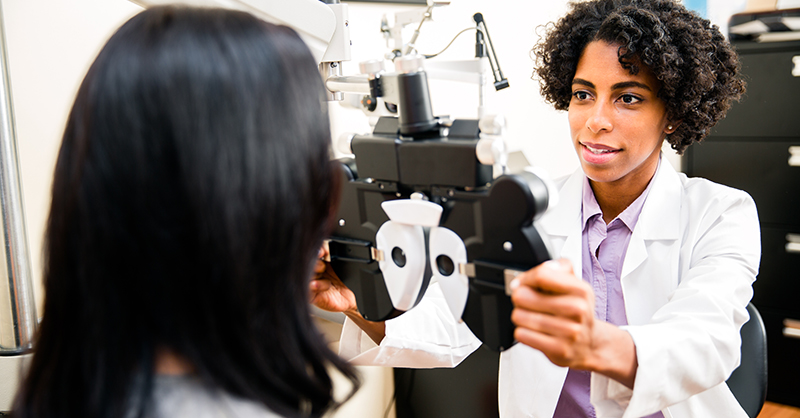Explore Advanced Solutions at Opticore Optometry for Eye Health
Explore Advanced Solutions at Opticore Optometry for Eye Health
Blog Article
Checking Out the most recent Technological Advancements in Optometry and What They Mean for Eye Doctors
From the precision of Optical Coherence Tomography to the nuanced insights used by AI-driven diagnostic devices, these developments are establishing brand-new standards in individual assessment and therapy. As these advancements penetrate the method, optometrists are faced with the difficulty of accepting these devices to boost person results.
Technologies in Diagnostic Tools
Progressing the field of optometry, innovations in diagnostic devices have reinvented the method eye care experts examine and diagnose ocular problems and aesthetic disabilities. The previous years has seen considerable technological improvements, allowing more exact and thorough evaluations. Optical Comprehensibility Tomography (OCT), for example, gives high-resolution cross-sectional photos of the retina, enabling the early detection of diseases such as glaucoma and age-related macular deterioration. This non-invasive imaging strategy has actually ended up being important in modern optometric method.
An additional secret development is the introduction of innovative corneal topography systems, which map the surface area curvature of the cornea with precision. These devices are specifically advantageous for fitting contact lenses and detecting corneal disorders. In addition, digital retinal imaging has actually transformed standard ophthalmoscopy, providing detailed, scenic views of the retina that facilitate thorough aesthetic examinations.
The advancement of wavefront aberrometry has actually also been essential, making it possible for the analysis of refractive errors with unrivaled accuracy (Opticore Optometry). This technology aids in customizing restorative lenses and boosting medical results for refractive surgical treatments. Collectively, these diagnostic advancements equip optometrists to supply premium person care, ensuring very early treatment and customized therapy approaches, eventually boosting visual wellness end results
AI in Individual Management
Building on the structure of advanced diagnostic devices, the incorporation of expert system (AI) in client administration stands for a transformative jump for optometry. AI systems are increasingly utilized to improve effectiveness, precision, and personalization in patient treatment. By assessing substantial amounts of data, AI can identify patterns and forecast potential ocular conditions, enabling optometrists to customize treatments extra effectively. This ability is crucial in taking care of chronic eye illness such as glaucoma and diabetic retinopathy, where very early detection and continual monitoring are vital.
Furthermore, AI-driven platforms facilitate streamlined patient interactions and management processes. Automated organizing, digital examinations, and customized follow-up strategies not only enhance patient contentment however also enhance time monitoring for specialists. These systems can triage individuals based on the seriousness of their conditions, making certain that those in critical need obtain timely attention.
Moreover, AI boosts decision-making by giving eye doctors with evidence-based referrals and therapy pathways. By incorporating data from electronic health documents, AI devices offer insights that educate clinical choices, lowering the risk of mistakes and enhancing individual outcomes. As AI proceeds to advance, its duty in individual management will likely broaden, reshaping the landscape of optometric care.
Advances in Retinal Imaging
In the realm of optometry, retinal imaging has witnessed remarkable technological advancements that are boosting analysis capabilities and individual treatment. Innovations such as Optical Comprehensibility Tomography (OCT) and fundus digital photography have actually transformed exactly how optometrists imagine and examine the retina. OCT, in certain, supplies high-resolution, cross-sectional pictures of the retina, permitting for the detailed exam of its layers. This ability is vital for very early discovery and monitoring of conditions like glaucoma, diabetic retinopathy, and age-related macular deterioration.
Improved imaging techniques like OCT angiography are further refining analysis accuracy. Eye Doctor Optometrist. Such developments help with the recognition of min retinal modifications that home might signify illness development.
Furthermore, developments in artificial intelligence are augmenting retinal imaging by making it possible for automated evaluation of huge datasets. These systems aid eye doctors in identifying patterns indicative of pathology, therefore improving analysis accuracy and performance. Collectively, these technologies are transforming retinal imaging into a cornerstone of modern eye care, enhancing results and increasing therapeutic possibilities.
Teleoptometry's Expanding Function
Teleoptometry is increasingly ending up being a vital element of eye care, driven by innovations in electronic communication and analysis tools. This is especially advantageous in country and underserved areas where accessibility to specialized eye care is commonly restricted.
The assimilation of expert system (AI) more improves teleoptometry, making it possible for the evaluation of visual data and aiding in the discovery of eye conditions such as glaucoma and diabetic person retinopathy. AI-powered formulas can rapidly translate complex imaging information, offering eye doctors with important insights that boost professional decision-making.
Furthermore, teleoptometry supports continuity of care with smooth assimilation with digital health documents (EHRs), allowing eye doctors to keep thorough client histories. When consulting with different specialists., this makes certain that individuals obtain customized and consistent treatment also.
Regardless of these benefits, difficulties continue to be, consisting of making certain data safety and security and taking care of person assumptions. Teleoptometry represents a substantial stride in the direction of more easily accessible, reliable, and patient-centered eye care. As Clicking Here technology evolves, its duty is positioned to broaden better.

Future Patterns in Eye Treatment
A myriad of innovative fads is set to reshape the future of eye care, driven by technological advancements and the evolving needs of individuals. One substantial trend is the integration of expert system (AI) in diagnostics, which promises to improve the accuracy and effectiveness of eye assessments. AI formulas can assess large quantities of data from retinal photos, possibly spotting conditions like diabetic retinopathy and glaucoma earlier than conventional techniques.
In addition, individualized medication is obtaining traction in optometry, with hereditary screening informing personalized treatment strategies. This strategy aims to maximize person results by customizing treatments to private genetic profiles. Wearable innovation, such as smart contact lenses, is also on the horizon, supplying real-time surveillance of intraocular pressure or glucose degrees, thus supplying constant understandings right into systemic and eye wellness.
The fostering of increased reality (AR) and virtual truth (VIRTUAL REALITY) in training and patient education and learning is one more arising pattern. These innovations use immersive experiences that can improve understanding and skills both for individuals and eye doctors. As these patterns advance, optometrists need to stay abreast of technical advancements to offer innovative treatment, making certain improved client results and fulfillment in the dynamic landscape of eye care.
Verdict

Jointly, these diagnostic developments empower optometrists to provide superior individual care, guaranteeing early intervention and tailored therapy methods, inevitably enhancing visual health and wellness results.

As these modern technologies proceed to evolve, optometrists must adapt and include them into practice, ultimately optimizing operations effectiveness and browse around these guys raising the criterion of eye treatment provided to individuals.
Report this page